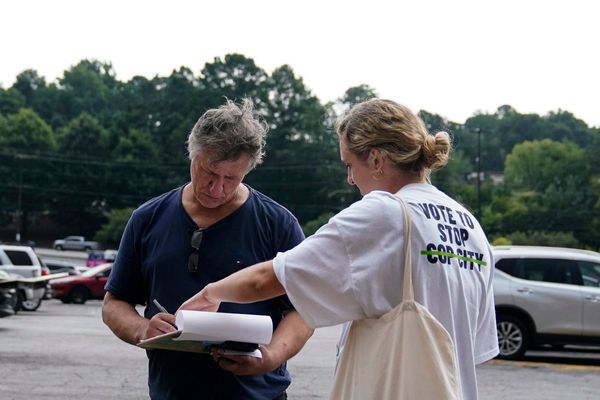Fishermen from K. Pallepalem village who eke out a living by fishing in the sea of Kothapatnam incur heavy losses year after year due to ghost nets or Abandoned, Lost or otherwise Discarded Fishing Gear (ALDFG).
ALDFG including lines, traps, hooks, dredges and buoys spread across the ocean bed can continue to trap fish and other species of marine life including sea turtles, dolphins, sharks, and rays and kill them. This is because they lack knowledge of the topography of the sea, laments an elderly fisherman Prabhu Prakash while making best use of the fishing ban period to mend their nets and overhaul their engines. The ban period to conserve fish will come to end on June 14.
Whenever they see a shoal of fish, they release their gear around the shoal, trapping the fish inside. Fishing nets sometimes get entangled in rocky structures on the seafloor and it becomes hard for the fishermen to retrieve the nets, leaving the fishermen with no choice but to abandon them. Each fisherman incurs a loss of ₹7 lakh to ₹12 lakh each year due to loss of net which they procure after raising loan at a high interest rate and run into debt of ₹6 lakh per fishermen on an average. Thanks to climate change, they often return empty-handed, lament a group of fishermen from the village with a population of over 8,000 people. Fish stocks are declining rapidly in the last three years, with over 12 variety of fish not to be seen.
“In order to curtail losses, they joined hands with the Hyderabad-based Animal Warriors Conservation Society (AWCS), which will undertake a bathymetric survey in August this year to measure the depth of the sea as well as map the underwater features of the water body so that fishermen can avoid fishing rocky terrain underneath. Fishermen can reduce the economic loss due to loss of net by up to 80% with the map with GPS coordinates provided by it,” says its general secretary Sanjeev Varma in a conversation with The Hindu.
Highlighting the ecological impact of ghost nets, he reveals that as per a report by World Wildlife Fund, 5,00,000 to 1 million tonnes of fishing gear enters the ocean every year. These ghost nets are killing millions of fish and marine wildlife worldwide. Ghost nets are one of the primary contributors of marine pollution. Endangered species often get entangled in these nets and die of exhaustion.
Ahead of the bathymetric survey, AWCS had conducted a boat-wise baseline survey, collected ADLFG data and documented the fishing techniques of fisherman to understand the economical impact of the ghost net, he says after conducting a beach clean-up drive by roping in members of the fisherman community including youth.
‘’We collected 22.2 kg of plastic, glass bottles from shoreline,” Mr Varma adds. Then they made a module shuttle net from the discarded fishing gear to generate extra income source for the fishermen after collecting 183 kg of discarded nets and 759 fishing gear stocked in the village.
There are 303 fishing boats in Pallepalam village. Of these, 49 are triple-engine boats, and 254 are single-engine boats. They incur an expense of around ₹60,000 each time they go for fishing.
The interaction with local fishermen led to the identification of two major rocky cliffs that were snagging repeatedly. According to the fishing community, in the last seven years, it has been estimated that around 200 tonnes of fishing gear has ended up in the sea due to snagging.
There are eight types of fishing gear in use by the fishing community to catch targeted species. The type of fishing gear changes according to the season. The survey revealed there are 759 fishing gears in the village. They use traditional techniques to catch the fish, and due to limited adoption of technology and best management practices, a huge amount of fishing gear ends up in the sea every year. They spend up to five days to repair the damaged nets. Every year, each group spends more than ₹1 lakh to repair their engines.
Trawl boats are causing more damage to gill nets which results not only in economical loss to the fishing community but also converting the fishing gear into ghost nets. A deeper study has to be conducted to understand the ecological impact of ghost nets, Mr. Varma explains. There are incidents of these fishermen rescuing Olive Ridleys, Hawksbills, porpoises, and whale sharks.







